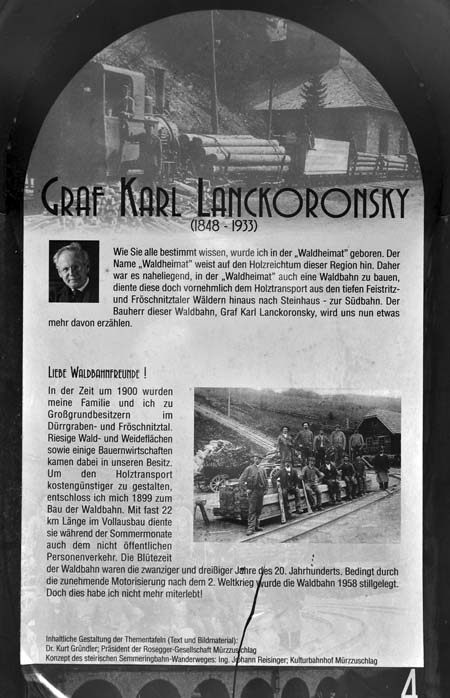
Feistritzwaldbahn
In the 1900's Graf Karl Lanckoronsky's family became major landowners in the Waldheimat region south of Steinhaus am Semmering. The name Waldheimat points to the rich forests of this region. Huge forest and pasture land as well as some farms came into their possession. In order to make the transport of lumber more cost-effective Lanckoronsky decided to build a narrow gauge railway (the Feistritzwaldbahn) of 600 millimetres (23.6 inches) for moving his lumber to market.
Construction started in 1902 and was completed between Steinhaus and Rettenegg by 1917. Almost 22 kilometers in total it was comprised of 3 sections, Fröschnitzgraben, Sattelstrecke, and upper Feistritztal. Timber was cut at an elevation as high as 1,300 metres (4,265 feet) reached by 2 inclined tracks. A connection with the Feistritztalbahn at Rettenegg was planned but ultimately not built by either railway.
Service was provided during the summer months including non-public passenger traffic. The heyday of the railway was during the 1920s and 1930s as wood was transported to an interchange with the Südbahn at Steinhaus for trans-shipment mostly to Vienna. Due to increasing motor vehicle traffic, following the Second World War, the railway was shut down in 1958 and the track removed.
Next to the Steinhauser Viaduct at Steinhaus am Semmering a sign commemorates this narrow gauge railway today.
